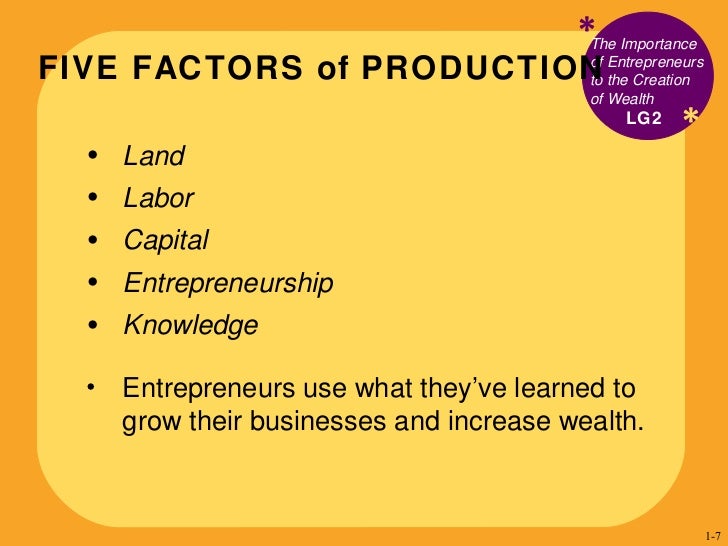

- Factors of production entrepreneurship examples how to#
- Factors of production entrepreneurship examples professional#
Many of the advances in our world today are the result of the application of intellectual human resources.įinally, labor brings creativity and innovation to businesses. In order to remain competitive, businesses place a premium on employees who bring these “hard skills” to the table. Intellectual contributions include experience in and out of school, training, skills, and natural abilities.

This broader definition of labor is particularly important in today’s technology-driven business environment, which has come to rely much more on the intellectual contributions of the labor force than the physical labor required of, say, working in a production line. The word labor often calls to mind physical labor-working in a factory or field, constructing a building, waiting tables in a restaurant-but it can refer to any human input (paid or unpaid) involved in the production of a good or service.
Factors of production entrepreneurship examples professional#
You may possess certain human resources already-perhaps you have an athletic gift that enables you to play professional sports to earn a living, for example-but you can also develop them through job training, education, experience, and so on. You’re adding to your own human resources right now by learning. Labor refers to human resources (also called human capital)-physical or intellectual. Resources that are cultivated or made with human effort can’t be considered natural resources, which is why crops aren’t natural resources. It’s also possible to invent new uses for natural resources (using wind to generate electricity, for example). These natural resources can be renewable, such as forests, or nonrenewable, such as oil or natural gas. New natural resources-or new ways of extracting them (such as fracking, for example)-can be discovered, though. Examples of natural resources are land, trees, wind, water, and minerals.Ī key feature of natural resources is that people can’t make them.
Factors of production entrepreneurship examples how to#
In order to provide benefit, people first have to discover them and then figure out how to use them in the production of a good or service. Natural resources have two fundamental characteristics: (1) they are found in nature, and (2) they can be used for the production of goods and services. Entrepreneurship (somebody who recognizes a profit opportunity).Capital (machinery, factories, equipment).There are four categories of resources, or factors of production: What makes something a resource? For one thing, it needs to be productive. Resources are also called factors of production. Simply put, resources are the inputs used to produce outputs (goods and/or services). All businesses, both for-profit and nonprofit, need resources in order to operate.


 0 kommentar(er)
0 kommentar(er)
